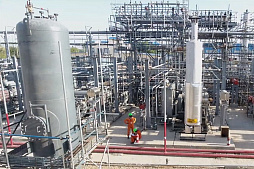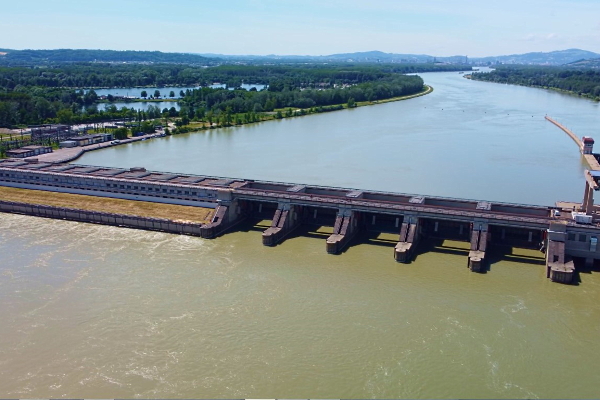To consider an application for financing, fill out the form and send it to us by e-mail along with the project brief, or contact our experts
Initially, SPV (Special Purpose Vehicle) was seen as a joint venture created by partner companies to implement projects with minimization of financial responsibility and risk.
Today, special project companies are widely used in project finance (PF) schemes, financing capital-intensive projects in the framework of public-private partnerships, as well as in various asset securitization schemes.
Typically SPV / SPE is created as a legally independent subsidiary that serves the specific economic goals of the parent company and is fully liable to the debts of a specific project. This solution allows the parent company to reduce the risk associated with participation in a new project with significant investments and a high level of uncertainty (for example, immature technologies).
In the broadest sense, any special-purpose vehicle refers to an independent subject of commercial law created to implement a specific business idea. In fact, it is a universal tool for organizational interaction between partner companies in the context of a project.
Having a unique structure corresponding to a specific project, an SPV can operate in the form of a limited liability company (LLC) or a joint stock company (JSC), the shares of which are divided between partners in accordance with their participation.
The choice of SPV structure depends on many criteria resulting from the applicable legal and tax regulations of the host country. This decision of the founders should be maximally adapted to the requirements of the project and its goals. The main advantage of using a project company in the framework of the implementation of investment projects is off-balance sheet financing, which does not burden the balance of the initiating company with debts.
These schemes are most often used by private companies, since project finance is associated with a reduction in financial risks for them. In practice, the assets of the parent companies are transferred to a special project company in order to attract financing without risk (capital "isolation").
This approach paves the way for obtaining larger loans against future financial flows that are not tied to the assets of the founders.
In addition, the off-balance sheet nature of the debt means that SPV bankruptcy does not lead to bankruptcy of the project initiators.
Currently, special purpose vehicles are widely used for the implementation of expensive projects, including the construction of factories and power plants, water treatment plants, roads and railways, bridges and many other infrastructure facilities.
Link Bridge Financial LTDA LBFL offers financing of investment projects through SPV / SPE.
Our financial team is ready to provide professional management of a project company and comprehensive consulting services for the implementation of any business project.
Contact LBFL consultants to learn more about the benefits of working with us.
Special purpose vehicle as the main link in project finance
Since the 1980s, project finance (PF) has been widely used to implement large investment projects by raising borrowed funds against the future financial flows of the project.This financial model is based on the establishment of an independent legal entity, the purpose of which will be to develop an investment project, raise funds and service debt.
The main characteristics of project finance using SPV / SPE are listed below:
• Generation of cash flows sufficient to repay the principal debt and provide profit to creditors and shareholders.
• Consistent planning of an investment project, regardless of other activities of the parties, which allows predicting the timing of achieving adequate cash flows and comparing it with the schedule for obtaining borrowed funds.
• Complete independence of the project, which is reflected in the special legal status of the project company.
• The financial structure of an SPV is usually dominated by various investor-shareholders interested in the project, including companies other than the original founders.
• The special purpose vehicle owns the assets of the project and manages their maintenance and proper use. An SPV enters into a chain of contracts required for the construction, operation, maintenance and sale of future products or services.
• In project finance, shareholders risk only their contribution to the SPV's capital, although in most cases various mechanisms are additionally used to ensure the safety of investors.
The PF is characterized by strong initial investments with a small contribution of the initiator (usually 15-35% of the investment) and a long period of project development to achieve the target financial indicators.
Also, such projects are characterized by high costs for analysis and preliminary research, as a result of which project finance is applicable mainly for large and profitable projects that can withstand these costs.
The PF requires the preparation of an information memorandum or a complete dossier with all the necessary documentation about the project, confirming the attractiveness of the latter for investors and creditors. Our team can arrange project finance from A to Z, ensuring the implementation of your project in the shortest possible time.
General characteristics of a special purpose vehicle
As mentioned earlier, SPV / SPE is a tool created to achieve specific goals set by project sponsors.Such a goal may be the implementation of an investment project or a certain financial transaction (securitization).
Typically, the parent company in such cases decides to create a subsidiary that will serve a specific economic purpose and reduce financial risk.
The creation of an SPV actually begins with the transfer of certain assets by the project initiating companies.
It should be emphasized that a newly formed company always acts as an independent economic entity. This allows it to leverage the resources it needs to implement large projects without putting the parent company at risk.
Special purpose vehicles are also created by government treasuries. In this case, the prerequisite for working on the principles of SPV is the willingness to limit state funding as much as possible and attract funding from external sources, as well as the concentration of efforts on the project.
From the point of view of project financing, the advantages of an SPV include the possibility of obtaining larger borrowed funds in comparison with the parent company. Such lending, which does not depend on the financial background of the borrower (lending without history), is most suitable for young companies with ambitious plans.
A special purpose vehicle is especially attractive for companies developing large investment projects. Thanks to this mechanism, it is much easier to win the favor of banks and interest outside investors. The goal is also to separate the project into a separate company and limit any possible claims that can then only be filed with that company. At the same time, all other companies in the group are engaged in other tasks and are not liable for SPV / SPE obligations.

By creating an SPV, the project initiator attracts lenders and investors by reliably isolating its assets from the project.
But the problem may lie in the short life cycle of such a company, which is limited by the life span of the investment project.
Despite the lack of a clear definition of the project company, it is characterized by the following:
• Contractual relationships with other companies.
• Lack of own non-financial assets and separate staff.
According to the meaning of European Union regulations, SPVs are mainly limited liability companies and joint stock companies. They are designed for a specific purpose and isolate the financial risk of the founders.
Reasons to use SPV for large projects
Among the shortcomings of large companies, experts mention insufficient flexibility and insufficient decision-making speed.Companies of this type are usually complex structures that combine the interests of many shareholders and operate through complex bureaucratic procedures. Executives, aware of the limitations of such a structure, are actively using special purpose vehicles as highly specialized and flexible tools.
Infrastructure projects, investments in the energy sector and mining concessions have long been the domain of SPVs. For non-industry companies, this practice may raise questions about the rationale for capital isolation.
However, managers of capital-intensive projects have no doubts: SPV in their case is a business necessity.
The key reasons for funding through SPV / SPE are listed below:
• High leverage: a typical financial structure of a project is 70-90% leveraged.
• Long term implementation of investment projects, which in some cases can reach 25-30 years.
• The cash flows of the project are the source of payment for the return on investment, and the SPV's assets become collateral.
• A wide variety of legal and organizational forms of the project, depending on the requirements of its participants.
Numerous parties interfere in the structuring of the project, such as sponsors and founders, lending banks and other financial institutions, contractors, operators, project consultants, and more.
In some cases, SPVs are controlled by the government when it comes to strategic government projects (such as the construction of roads or power plants).
The financial structure of projects is designed in such a way that no partner takes all the risk. Risk and responsibility are allocated among the participants based on a complex system of guarantees and various forms of participation. The distribution of project cash flows is carried out in such a way as to minimize potential threats to the project and ensure acceptable financial results for all participants.
The establishment of a special purpose vehicle in each case requires a unique, customized approach to the project.
World experience clearly demonstrates how the use of SPV / SPE can contribute to the effective distribution of managerial responsibility and strengthening of project supervision.
Unlike traditional lending, the PF mechanism forms a rational system of risk management. This approach helps participants make coordinated decisions on project implementation, making changes if necessary based on feedback and changes in the business environment.
SPV in the context of public-private partnership
The implementation of projects on the basis of public-private partnerships requires the use of special mechanisms to search for new sources of funding and further development of projects while maintaining ownership of the public sector.These should be mechanisms that ensure the effect of financial leverage and the attraction of private companies to improve the efficiency of the use of public funds. Project finance allows attracting highly specialized private companies for professional management and various types of services on an ongoing basis.
Table: Sources of financing for projects in the framework of public-private partnerships.
| Internal financial resources | External financial resources that are included in equity | External financial resources that are not included in equity |
| Profit of the company and special funds that are formed from profits | Share capital | Bank loans |
| Depreciation deductions | Own funds of the founders | Loans from non-banking institutions |
| Insurance payments | Grants and donations | Funds from the issue and placement of bonds |
| Fixed assets of the company | Direct and indirect subsidies | Government loans and borrowings |
| Other sources | Loans from suppliers and contractors | |
| Equipment leasing |
Experts identify three most common instruments for financing PPP projects:
• Government financing, in which the state attracts borrowed funds through loans to the final borrower, grants, subsidies and guarantees for debt obligations. Usually, government agencies receive loans on more favorable terms, but they are limited by the financial resources of the budget and a large number of capital-intensive state programs. The low efficiency of commercial risk management has a strong impact on these projects.
• Corporate financing, in which the company raises borrowed funds, guaranteeing their return with its assets. This approach requires sufficient assets and involves significant financial risk for the borrower. Most utilities and government companies cannot use this tool widely.
• Project finance, in which loans are provided to a specially created project company. In this case, lenders rely on the future cash flows of the project to recover the funds, and collateral is limited to the project's assets and future earnings. SPV / SPE debt is not reflected in the balance sheet of the companies that initiate the project.

The latter financial instrument is characterized by numerous advantages, such as high financial leverage and flexibility required for the successful implementation of large investment projects with a long payback period.
The role of project finance in PPP projects
Project finance (PF) in PPP is based on the concept of financing investment projects under the guarantee of the expected income that the created enterprise will bring during the operation period.PF has several specific features that distinguish it from other forms of financing.
The most important feature of the PF is that all the fixed, circulating funds and financial flows of the project are displayed on the balance sheet of a special company created for the project. In other words, the cost of the project is isolated from the balance of the founders, and the guarantee of the return of loans and invested funds is only the expected economic effect of the project.
Although the assets of the initiating company are not used as collateral, the host government, banks, international organizations and financial institutions are entitled to provide various kinds of guarantees for participants.
In the PF system, there is no dependence of partner projects on the value of the assets involved or interest rates, as well as on the terms of loans. The fact of the successful implementation of the project is the most important for its participants. They make themselves dependent on the potential of the project and its sensitivity to all sorts of negative and positive factors.
In project finance, a private company (government partner) and other participants involved in a PPP project form an independent legal entity with separate assets.
Thus, project financing is targeted borrowing without recourse or with limited recourse of the investor to the borrower (initiator).
The activities of a company established in accordance with the legislation on public-private partnerships are subject to restrictions, which in most cases are unfavorable for private capital. Nevertheless, the implementation of the project within the framework of PPP provides much more effective cooperation and allows participants to most effectively organize the investment process, use the many advantages of private companies and their management experience.
In the European Union and beyond its borders, a new concept of public administration is becoming more and more popular, which consists in transferring state tasks into the hands of private capital according to the formula of public-private partnership. Public and private companies are increasingly implementing large PPP projects using jointly created project companies.
One of the major obstacles to the implementation of public-private partnership projects is the potential negative impact of PPP projects on public debt.
This can be avoided by creating a separate company, which, along with other advantages of SPV / SPE, makes the choice of a project finance mechanism obvious.
The indisputable advantage of SPV is closer and more efficient cooperation of partners. It is easier for a company as a separate entity to go through a multi-stage investment process and carry out all the necessary activities at the operational stage of the project. The supervisory board of the company, in turn, will provide more effective control over the planned activities.
There is no single operational role or legal framework for the use of SPVs in public-private partnership projects.
Specific requirements vary depending on the agreements of the participants and stakeholders.
But in all cases, the SPV is created in accordance with the legal and accounting standards of a particular country or jurisdiction.
Most government projects depend on the support of commercial banks or other financial institutions.
SPVs usually offer high leverage and are therefore used to raise significant funds from other lenders and investors. The SPV protects the government agency and all funding parties from counterparty risk. In the case of debt financing, any claims of the lender are limited to the assets of the project company and do not affect the assets or financial interests of the project participants.
An important advantage of using SPV in public-private partnership projects is high financial flexibility. The debt of a project company does not affect the balance sheet of a private company or government agency. As a result, the government agency can leave more fiscal space for other public projects and commitments.
The implementation of such projects can help to improve the credit rating of government bonds issued to attract financing. Government bonds are considered low risk investments as they are backed or guaranteed by the issuing country.
This makes the financed projects more attractive to foreign and domestic investors.
Through public-private partnerships, the SPV can help the government maintain financial or fiscal flexibility by allowing it to issue bonds for other projects as needed. In addition, a high credit rating on outstanding bonds could help lower interest rates, keeping debt service costs low.
If you are interested in the implementation of large PPP projects in energy, transport or other areas, please contact our specialists.
Link Bridge Financial LTDA LBFL successfully operates in all key sectors of the economy, representing the interests of corporate clients in dozens of countries of the European Union, North America, Latin America, Asia and Africa.

Role of a special purpose vehicle in the securitization of assets
Special purpose vehicle means an entity that is legally separate and independent from the initiating company, which may have a different formal status depending on the legislation of the host country.SPV / SPE has an extremely limited scope of activity and is aimed at acquiring rights of claim in obligations and issuing securities backed by the above rights.
These companies are distinguished by a special management structure and special rules for initiating reorganization and bankruptcy procedures.
Classic off-balance sheet securitization is as follows. The originator with a broad portfolio of assets (for example, credit claims) transfers such assets to an SPV. This company will issue securities backed by the transferred assets for the purpose of their subsequent placement among investors.
In other words, a special project company plays a central role in securitization, converting low-liquid claims into high-liquid securities purchased by domestic or foreign investors. It is currently one of the most promising financial instruments in the global market and continues to strengthen. It should be noted that in a number of countries the SPV does not have the status of a legal entity, and its activities may differ significantly depending on the specific market.
Purpose of SPV creation
A special purpose vehicle is one of the main participants in off-balance sheet asset securitization.SPV / SPE provides high protection against potential bankruptcy.
Thanks to special forms of organization and management, it is able to more efficiently perform the assigned functions in comparison with traditional types of companies.
The purpose of creating a special company for the securitization of assets is to purchase rights of claim in the obligations of the originator and to issue highly liquid securities to finance their purchase. As a new entity, SPV has no previous operating history and is not burdened by any financial obligations to creditors.
Using SPV / SPE to securitize assets allows participants to isolate a specific group of assets or cash flows, thus protecting them from unwanted project risks associated with the business activities of other securitization participants. For this, the newly created legal entity should not have any formal connection with the originator. Thanks to the latter feature, both the project company and the investors mitigate the bankruptcy risks of the initiator of the securitization.
An SPV can also get a much higher credit rating, which is seen as another benefit.
The role of SPV / SPE in securitization projects is as follows:
• Securitization of the originator's assets and their sale to investors in the form of debt securities.
• Ensuring reliable protection of investors from the risk of bankruptcy of the initiating company.
• Isolation of securitized assets from originator's creditors.
Often the SPV / SPE does not carry out any business activities and does not have a physical location or staff. Such a "virtual" entity can hire specialists from the initiating company under a contract.
Given these features, the legislation of certain countries strictly regulates the activities of the project company, limiting its capabilities.
Organizational and legal status of SPV / SPE in the context of asset securitization
SPV / SPE can be created in the form of a limited liability company, partnership, corporation, joint stock company, trust, fund or other organizational form, which is determined by the requirements of the participants and the laws of the country.Most often, this entity is created in the form of a joint stock company, which subsequently issues and places securities for an unlimited number of internal and external investors.
Financial experts note the wide variety of SPV forms in different countries. For example, a special project company is quite often organized as a charitable trust in Canada, France, Argentina and several other countries. Trustees or charitable foundations allow the entity to achieve maximum independence from the initiator of the securitization.
American companies often use limited liability corporations (LLCs), which is largely a US-specific legal form. Limited liability partnerships (LLPs) and trusts are also very common in the United States.
This is due to the peculiarities of local legislation, including in terms of business taxation.
On the other hand, European companies prefer to create limited liability corporations as well as limited purpose corporations (LPCs). In many cases, charitable trusts can act as founders.

Bankruptcy remoteness
One of the most important advantages of using a project company to securitize assets is the so-called bankruptcy remoteness.This principle is to protect the project from bankruptcy of the originator or SPV / SPE.
Bankruptcy remoteness has tremendous legal and financial implications for large projects.
The consideration of a bankruptcy case for an SPV, which has a special legal status, vary significantly in different countries and depends heavily on the peculiarities of the functioning of the local judicial system. In any case, the company created for the securitization of assets must be properly structured to make voluntary or forced involuntary bankruptcy impossible.
Bankruptcy remoteness requires a number of measures, listed below:
• Significant limitation of the goals and powers of the SPV.
• Restriction of the right of the project company to incur any debt obligations.
• Restriction or prohibition on mergers, acquisitions, division, liquidation, sale of assets and changes in statutory documents.
• Inclusion of clauses in the company's by-laws that limit the interaction between the initiator of the securitization and the SPV.
• Introduction of separate clauses in the statutory documents regarding the impossibility of the involuntary bankruptcy procedure.
• The presence of an independent manager, whose consent is required to initiate the voluntary bankruptcy procedure.
• Availability of security for the obligations of a special project company.
Under standard agreements between SPVs and creditors, the latter often waive their right to initiate bankruptcy proceedings in certain cases.
This provision requires caution, since not all countries allow contractual restrictions on bankruptcy procedures.
The legal consequences of the originator's bankruptcy are also of great importance for the results of the project. All this emphasizes the need for a professional organization of securitization with the involvement of financial and legal experts at all its stages.
In the event of bankruptcy of the originator, the special project company adheres to the principle of a true sale of assets. Being independent of the assets of the initiator of the securitization, the SPV / SPE does not have to meet the claims of the originator's creditors, and the assets received are not included in the liquidation estate of the initiating company.
This is especially important in the context of the possible consolidation of the assets of the originator and the SPV by some courts in bankruptcy cases.
The true sale principle, along with the principle of bankruptcy remoteness, ensures the reliability, stability and security of the SPV for the securitization of the initiator's assets.
According to the true sale principle, the securitization initiator unconditionally and definitively transfers its claims to the SPV / SPE, waiving any rights associated with these assets. The exception is when the originator must service the assets after they have been transferred.
Choice of jurisdiction for SPV / SPE establishment
The right choice of jurisdiction for the SPV / SPE establishment is key to the success of securitization and high investment returns.Typically, companies choose territories with a favorable tax climate, stable financial regulations, and low political risk.
Also, the host country or jurisdiction should offer low corporate costs and acceptable requirements for share capital and management responsibility.
Considering the above requirements, many companies in recent years have chosen such convenient jurisdictions as the Netherlands, Luxembourg, British Virgin Islands, Jersey, Cayman Islands, as well as Ireland and a number of other jurisdictions.
The complexity of securitization and the ongoing expansion of financial schemes and models of its use force businesses to seek the assistance of qualified financial and legal advisers. Financial market conditions, host country's legal framework and restrictions, partner requirements and other factors influence the success of securitization.
Do you need professional help establishing and managing an SPV / SPE?
Are you looking for qualified advice on financial modeling and project finance?
Contact the LBFL team to learn more about our services.




























